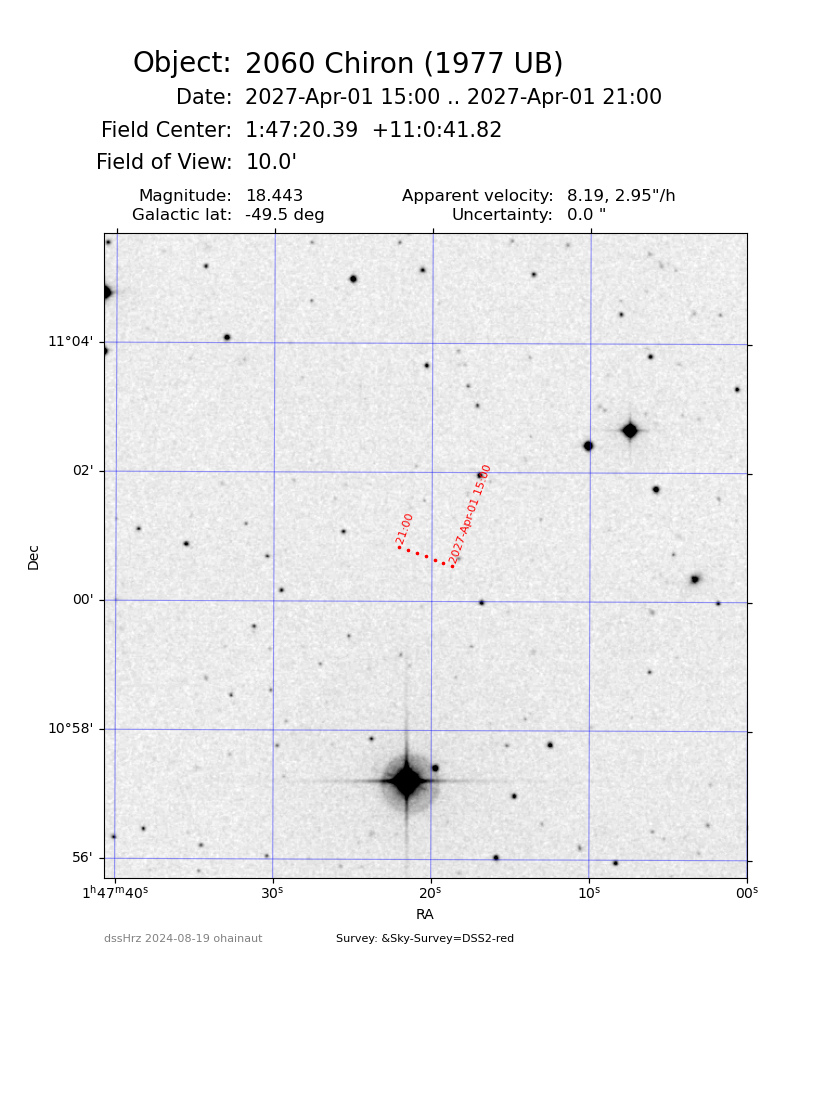For a solar system object and a period of time, get the object's ephemerides from JPL Horizon, and generate a DSS finding chart for each night
It uses astroquery.jplhorizons to get the ephemerides from JPL, and retreives the DSS from the ESO archive.
Usage: dssHrz.py [-h] [-f OUTFILE] [-o OBJECT] [-n NIGHT] [-e ENDNIGHT] [-t TEL] [--FoV FOV]
[-p ESOPROGID] [-s SURVEY]
Generate a DSS finding chart for a solar system object for 1 night
options:
-h, --help show this help message and exit
-f OUTFILE, --outFile OUTFILE
Root of the output files. Default is DSS
-o OBJECT, --object OBJECT
Designation of the object; must be resolved by Horizon; in case of doubt use the Unique JPL ID (in the ephem header, 1st line Rec #:
-n NIGHT, --night NIGHT
Night to be considered: YYYY-MM-DD[Thh:mm]; the ephem will go from t0 to t0+24h
-e ENDNIGHT, --endNight ENDNIGHT
If provided, will iterate from night to endNight
-t TEL, --tel TEL IAU Observatory code or name, must be resolved by JPL.
Default is 309 = Paranal.
--FoV FOV Field of view, arcmin; will be extended if needed
-p ESOPROGID, --ESOprogId ESOPROGID
ESO program ID for labeling ESO-SM finders.
-s SURVEY, --survey SURVEY
survey, from DSS2-red DSS2-blue DSS1 or any.
Default is any, which will try all 3 in that order.
If more than 1 night is requested, the script will iterate and produce one finder per night.
The plot has 1 point per hour; if the orbital uncertainty is larger than 5", the uncertainty ellipse is drawn in a corner.
Example:
